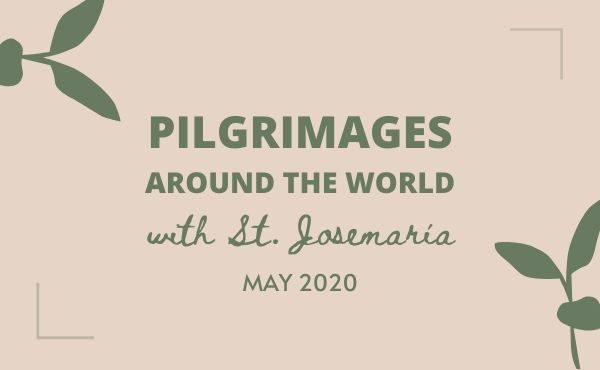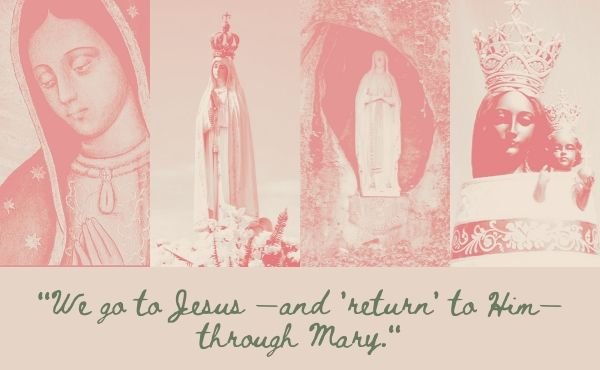Download PDF: Pilgrimages Around the World with Saint Josemaría
Visit Guadalupe · Visit Lourdes · Visit Fatima · Visit Loreto · Visit Pillar
Although plans for "re-opening" are beginning in many countries this week, it will still be a while before many of us will be able to go out on the street as we used to. Under these circumstances, many shrines and churches are offering the possibility of connecting online to their tabernacles or to their images of Our Lady, so that people can still "go" to them to pray.
The month of May is a time especially dedicated to the Virgin Mary. The "month of Mary" is a deep-rooted tradition among Christians, the origins of which date back to 13th century Castille, Spain. Now it is lived in numerous countries around the world, each with its own special characteristics.
This month, we can try to give Our Lady the loving attention of a child to our mother. This is what the Pope has asked us to do in his letter for the month of May: to pray the Holy Rosary at home, with our families or friends. Then we will learn for ourselves what St. Josemaría wrote in The Way: that "we go to Jesus—and 'return' to Him—through Mary."
Download PDF: Pilgrimages Around the World with Saint Josemaría
What is a May Pilgrimage?
Since the Middle Ages, pious Christians have made pilgrimages —a special journey or visit— to holy sites, especially to the Holy Land, where Our Lord Himself walked, and to Rome, the seat of Christianity. The concept of a pilgrimage has broadened over time, and now many people make pilgrimages to shrines dedicated to the Virgin Mary, often in the places where Mary is known to have appeared throughout history: Guadalupe in Mexico, Lourdes in France, Fatima in Portugal...
The May pilgrimage is a visit to Our Lady made with filial love. St. Josemaría prayed three parts of the Rosary when doing a pilgrimage: one on the way there, another at the shrine (with the mysteries corresponding to the day of the week, and with the litanies), and the third on the way back.
The founder of Opus Dei always had a great devotion to the Mother of God. In May of 1935, he made a pilgrimage to the shrine of Our Lady of Sonsoles in Avila, Spain, accompanied by two young men, and prayed the three parts of the Rosary with them. He described this visit in a homily published in Christ is Passing By:
"It wasn't a pilgrimage in the normal sense: nothing noisy or elaborate, just three of us. I respect and love public demonstrations of devotion, but I must admit I prefer to offer Mary the same affection, the same enthusiasm, in private visits or with very few people: a more intimate sort of thing."
Although we may not be able to go very far to visit a shrine this year, Our Lady finds a thousand ways to be present in our homes and in our daily lives. Moreover, thanks to today's technology, many pilgrimage sites around the world allow us to pray "live" before images of Our Lady through a webcam.
During our pilgrimage, we can offer Our Lady small sacrifices for our own intentions and those of the whole Church: for example, walking at least the last part of the pilgrimage, accepting with joy the discomforts of the journey or the inclement weather, foregoing the little refreshments that would be normal during a walk, etc. If we are confined at home, we can simply accept willingly the discomfort of being in quarantine.
Download PDF: Pilgrimages Around the World with Saint Josemaría

